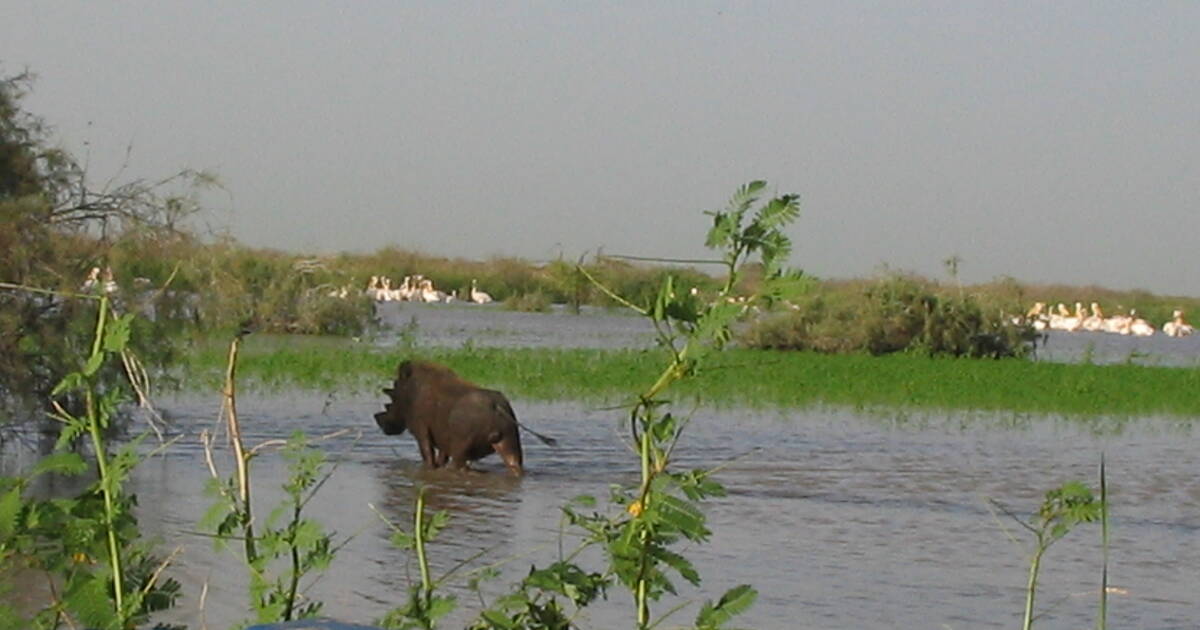
Exploring Djoudj National Park: A Haven for Migratory Birds
Djoudj National Park Senegal birds wetland photos
Djoudj National Bird Sanctuary
I can hardly contain my excitement as I set out to explore the Djoudj Sanctuary, located in the heart of the Senegal River delta. This wetland paradise spans an impressive 16,000 hectares and is made up of a large lake surrounded by a labyrinth of streams, ponds, and backwaters.
As a traveling photographer, I’ve had the privilege of visiting some truly remarkable locations, but the Djoudj Sanctuary is truly one of a kind. What sets this place apart is the sheer number of birds that call it home. It’s hard to believe, but this wetland sanctuary is currently home to approximately 1.5 million birds!
During my time here, I’ve had the pleasure of seeing some of the most beautiful and unique bird species in the world. From the majestic white pelican and the regal purple heron to the quirky African spoonbill and the graceful great egret, this place is truly a birdwatcher’s dream come true. And of course, no wetland habitat would be complete without the presence of the iconic cormorant, and they are in abundance here at Djoudj.
As a photographer, I feel incredibly lucky to have had the opportunity to witness and capture the natural beauty of this place. However, it’s important to remember that this sanctuary is a fragile ecosystem, and it’s up to us to protect it for generations to come. So let’s remember to tread lightly and leave no trace as we explore and appreciate the wonders of the Djoudj Sanctuary.
The available description is licensed under CC-BY-SA IGO 3.0.
Parc national des oiseaux du Djoudj
Je suis tellement enthousiaste à l’idée d’explorer le parc du Djoudj, situé dans le delta du fleuve Sénégal. Cette oasis de zone humide s’étend sur 16 000 hectares et se compose d’un grand lac entouré d’un labyrinthe de ruisseaux, d’étangs et de bras morts.
En tant que photographe voyageur, j’ai eu la chance de visiter des endroits vraiment remarquables, mais le parc du Djoudj est vraiment unique en son genre. Ce qui distingue cet endroit est le nombre impressionnant d’oiseaux qui y vivent. C’est incroyable à croire, mais ce sanctuaire humide abrite actuellement environ un million et demi d’oiseaux !
Au cours de mon séjour ici, j’ai eu le plaisir de voir certaines des espèces d’oiseaux les plus belles et les plus uniques au monde. Du majestueux pélican blanc et du héron pourpre royal à la spatule africaine excentrique et à la grande aigrette gracieuse, cet endroit est vraiment le rêve d’un ornithologue. Et bien sûr, aucun habitat humide ne serait complet sans la présence de l’emblématique cormoran, et ils abondent ici à Djoudj.
En tant que photographe, je me sens incroyablement chanceux d’avoir eu la chance de témoigner et de capturer la beauté naturelle de cet endroit. Cependant, il est important de se rappeler que ce sanctuaire est un écosystème fragile, et il nous appartient de le protéger pour les générations à venir. Alors, n’oublions pas de marcher légèrement et de ne laisser aucune trace en explorant et en appréciant les merveilles du parc du Djoudj.
The available description is licensed under CC-BY-SA IGO 3.0.
حديقة دجودج الوطنية للطيور
أنا مصور متجول وأشعر بالحماسة الشديدة لزيارة حديقة دجوج في دلتا نهر السنغال. هذه المنطقة الواقعة في الرطوبة المحيطة تمتد على مساحة 16000 هكتار وتتكون من بحيرة كبيرة محاطة بمجموعة من الجداول والمستنقعات والمنعطفات التي تشكل ملاذًا حيويًا وهشًا لأكثر من مليون طائر، بما في ذلك البجع الأبيض ومالك الحزين الأرجواني وطائر أبو ملعقة الأفريقي والغوش الكبير وطيور الغاق.
بصفتي مصورًا متجولًا، تمكنت من زيارة العديد من الأماكن الرائعة ولكن حديقة دجوج فريدة من نوعها. ما يميز هذا المكان هو عدد الطيور الهائل الذي يعيش هنا. صعب تصديقه ولكن هذا الملاذ الرطب يحتوي على ما يقرب من مليون ونصف المليون طائر!
خلال زيارتي هنا، كنت سعيدًا برؤية بعض من أجمل وأفراد الأنواع الفريدة من الطيور في العالم، من البجع الأبيض والمالك الحزين الأرجواني الملكي إلى طائر أبو ملعقة الأفريقي الغريب والغواش الكبير وأخيرا طيور الغاق الرائعة. هذا المكان هو بالتأكيد أيضًا الحلم الحقيقي لأي عالم طيور. وبالطبع، لا يكتمل أي موطن رطب دون وجود الغطاس الشهير، ويوجد الكثير منهم هنا في دجوج.
كمصور، أشعر بالحماس للغاية لتمكني من شهادة وتصوير الجمال الطبيعي لهذا المكان. ولكن الأمر المهم هو تذكر أن هذا الملاذ هو نظام بيئي هش،
UNESCO/ERI provides a fascinating description of the world-renowned Djoudj Sanctuary. This wetland, located in the delta of the Senegal River, spans an impressive 16,000 hectares and consists of a large lake surrounded by streams, ponds, and backwaters. It serves as a vital, yet delicate, sanctuary for an estimated 1.5 million birds of various species, including the white pelican, the purple heron, the African spoonbill, the great egret, and the cormorant.
The description is available under the CC-BY-SA IGO 3.0 license, which allows for the sharing and adaptation of the content as long as proper attribution is given to the source. This license ensures that the information about this incredible sanctuary can be spread widely and accurately, promoting conservation efforts and raising awareness about the importance of protecting the natural habitats of various bird species.
朱贾国家鸟类保护区
The information regarding the Djoudj Sanctuary is provided by UNESCO/ERI and can be utilized under the CC-BY-SA IGO 3.0 license, allowing for sharing and adaptation with appropriate attribution given to the source.
Орнитологический резерват Джудж

Расположенные в дельте реки Сенегал водно-болотные угодья занимают площадь 16 тысяч гектаров и состоят из большого озера, окруженного протоками и мелкими водоемами. Это место является важным и уязвимым убежищем для огромного количества птиц – оценивается, что здесь обитает около 1,5 миллиона пернатых различных видов, включая белого пеликана, рыжую, большую белую цаплю, колпицу и баклана.
Это уникальное место, где можно наблюдать за разнообразными видами птиц в их естественной среде обитания, и, кроме того, оно играет важную роль в сохранении и защите экосистемы данной области.
The information about the Djoudj Sanctuary, including its location in the Senegal River delta and the various bird species that call it home, is provided by UNESCO/ERI. This information can be used and shared under the CC-BY-SA IGO 3.0 license, which allows for adaptation and sharing as long as appropriate attribution is given to the source.
The Djoudj Sanctuary is a unique wetland area that provides a crucial habitat for millions of birds, including the white pelican, purple heron, African spoonbill, great egret, and cormorant. Covering an area of 16,000 hectares, this sanctuary is a fragile ecosystem that requires protection and preservation.
Visitors to the Djoudj Sanctuary can witness the beauty of these bird species in their natural habitat, and learn about the important role this sanctuary plays in the larger ecosystem of the Senegal River delta. With its vast wetlands and diverse bird populations, the Djoudj Sanctuary is truly a wonder of nature that deserves recognition and protection.
Santuario Nacional de Aves de Djudj
As a traveling photographer, I’ve been fortunate enough to visit some of the world’s most breathtaking landscapes and wildlife habitats. One of my recent trips took me to the Senegal River delta, where I discovered the Djoudj Sanctuary, a wetland spanning 16,000 hectares that is home to a diverse range of bird species.
The Djoudj Sanctuary is a beautiful sight to behold, with a large lake surrounded by streams, ponds, and backwaters, providing a vital yet fragile sanctuary for over 1.5 million birds. As I explored the sanctuary, I saw majestic white pelicans gracefully gliding across the lake, while the purple heron and African spoonbill made their presence known in the nearby streams.
One of the highlights of my trip was spotting the great egret perched on a branch, patiently waiting for its next catch. And while I observed the cormorants dive into the water to catch fish, I couldn’t help but feel humbled by the beauty and complexity of nature.
The Djoudj Sanctuary is an important conservation area and a UNESCO World Heritage site. The sanctuary’s diverse bird population, which includes the great egret, the African spoonbill, the cormorant, and the purple heron, among others, is a testament to the importance of preserving natural habitats.
My journey to the Djoudj Sanctuary was an awe-inspiring experience that highlighted the importance of protecting our natural world. I hope that more people will have the opportunity to visit and appreciate the beauty and fragility of this vital sanctuary.
The text can be rephrased as: “The information source for this content is UNESCO/ERI and the description is accessible under CC-BY-SA IGO 3.0 license.”
ジュッジ国立鳥類保護区
Nationaal vogelreservaat van Djoudj
The Djoudj National Bird Sanctuary is located in the delta of the Senegal River. It is a water-rich natural area covering 16,000 hectares and includes a large lake surrounded by streams and ponds. This area is a vital but vulnerable sanctuary for around 1.5 million birds, including the white pelican, purple heron, African spoonbill, great egret, and cormorant. In addition, the area is home to West African manatees and various species of crocodiles. The site was first recognized as a natural area in 1962, and later the entire bird sanctuary of 16,000 hectares was inscribed on the UNESCO World Heritage List.
Outstanding Universal Value
The Djoudj National Park, located in the delta of the Senegal River, is a wetland ecosystem covering 16,000 hectares that serves as a sanctuary for over 1.5 million migratory birds. The park consists of lakes surrounded by streams and is home to various species including the white pelican, African spoonbill, cormorant, pink flamingo, and great egret. This area is vital for the survival of these birds but is also fragile and needs protection.
Djoudj National Park is a unique and important ecosystem located in the Senegal River delta. It has been recognized as a World Heritage Site by UNESCO for its significance in providing a crucial stopover point for migratory birds crossing the Sahara Desert. The park comprises a chain of lakes, backwaters, fords, and sandbanks that offer a haven for over 1.5 million migratory birds, including species from both the Palaearctic and Afrotropical regions.
The park’s importance lies not only in its function as a migration stopover but also as an oasis in the desert. With the aid of technical improvements, such as building nest boxes, the park has become a breeding ground for several species. The annual maintenance of these improvements and efforts to control the hydraulic system have led to an increase in both migratory and nesting species in the park.
Djoudj National Park’s significance is further underscored by its unique location and role as a vital sanctuary for many bird species. The white pelican, African spoonbill, cormorant, pink flamingo, and great egret are just a few of the many species that call this park home. Their presence in the park highlights the importance of preserving this ecosystem and its inhabitants for generations to come.
Djoudj National Park is a wetland ecosystem that spans approximately 16,000 hectares and is a sanctuary for over 1.5 million birds of 365 species, including over 120 species of migratory birds from both Palaearctic and Afrotropical regions. The park is a crucial stopover point for birds crossing the Sahara desert during their migration. The park consists of a large lake surrounded by streams, ponds, and backwaters. Among the nesting bird species found in the park are the white pelican, purple heron, African spoonbill, great egret, night heron, and cormorant. Additionally, the park contains large populations of crocodiles and manatees.
The park has been recognized for its outstanding value based on two criteria. Criterion (vii) highlights the significance of the park’s location as an oasis in the desert that serves as the first migration stopover for migratory birds crossing the Sahara. Due to technical improvements that have been made to the habitat, the number of migratory and nesting bird species has continued to increase.
Criterion (x) underscores the park’s importance as a vital sanctuary for nesting bird species, including the white pelican, African spoonbill, and great egret. In addition to its significant bird population, the park is also home to large populations of crocodiles and manatees.
Despite its value, the park faces significant threats to its integrity. Agricultural chemicals used upstream are polluting the Senegal River, disrupting the delicate balance of the food chain. The construction of a downstream dam project could also severely disrupt the park’s hydrological equilibrium. The start-up of the Diama dam downstream from the park has already disrupted the park’s water balance, resulting in the proliferation of invasive aquatic plants, the reduced amplitude of water levels, and the decrease or disappearance of some bird colonies. As a result, the park has been placed on the List of World Heritage in Danger twice, between 1984-1988 and 2000-2006. It is crucial that efforts continue to be made to protect and conserve this valuable ecosystem.
The property is protected and managed according to various national laws and regulations. A management plan has been developed, which prohibits any form of exploitation except for scientific purposes. The property is overseen by a management administration that works under the direct supervision of the State, specifically the Ministry of Environment and Sustainable Development and the National Parks Directorate. The administration collaborates with an inter-village committee and a team of eco guards to address management issues and engage local communities. Eradicating invasive species is a priority for management, but the primary objective is to restore the ecological characteristics of the property and ensure the return of the bird population to its previous levels in the long term.
The property is protected and managed according to various national laws and regulations. A management plan has been developed, which prohibits any form of exploitation except for scientific purposes. The property is overseen by a management administration that works under the direct supervision of the State, specifically the Ministry of Environment and Sustainable Development and the National Parks Directorate. The administration collaborates with an inter-village committee and a team of eco guards to address management issues and engage local communities. Eradicating invasive species is a priority for management, but the primary objective is to restore the ecological characteristics of the property and ensure the return of the bird population to its previous levels in the long term.



